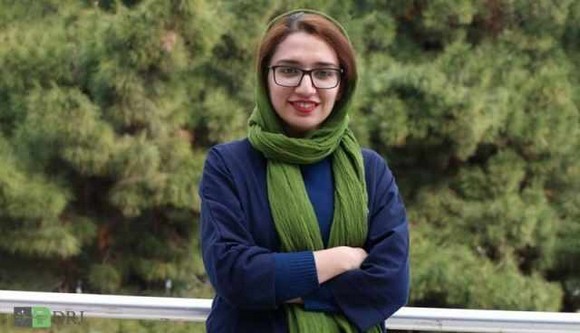Seyyed Hossein Nasr
Syed Hossein Nasr was born in Tehran ( 1933 ) . After receiving his early education in Iran , Nasr studied physics and mathematics at Massachusetts Institute of Technology ( MIT ) and received his doctorate from Harvard University in 1958 with specialization in Islamic cosmology and science . From 1958 until 1979 , he was professor of the history of science and philosophy at Tehran University where he was also the dean of the Faculty of Letters for some years . He also served as president of Aryamehr University in Iran .
In 1962 and 1965 , he was visiting professor at Harvard University and in 1964-65 the first Agha Khan professor of Islamic studies at the American University of Beirut . He was the founder and first president of the Iranian Academy of Philosophy . In 1979 , he migrated to the United States and taught at several American universities before finally joining the George Washington University , Washington DC in 1984 where he is currently the University Professor of Islamic Studies . In 1981 , Nasr gave the Gifford lectures at the University of Edinburgh , which was published the same year as Knowledge and the Sacred . In 1999 he was chosen to be the first Muslim scholar to receive the Templeton Religion and Science Course Award . Most recently , a volume on Nasr in the Library of Living Philosophers Series has been edited , which includes several studies on his views of science .
Nasr has written a number of books and articles on the relation between religion and science in general and Islam and science in particular . His doctoral dissertation , which appeared first in 1964 under the title An Introduction to Islamic Cosmological Doctrines , is the first modern book devoted to the study of Islamic cosmology . In the Introduction , Nasr discusses three prominent figures of Islamic science and their approach to the study of nature . His next book Science and Civilization in Islam , first published in 1968 , brought the concept of ‘Islamic science’ to the fore with full force . In this work , Nasr discussed the meaning of science within the context of Islamic religious worldview and analyzed the achievements of Islamic scientific tradition in such fields as medicine , astronomy , mathematics , algebra , chemistry , physics , geography , and natural history . The book is based on the original sources and remains one of the best compendia of science in the Islamic civilization .
Nasr’s next work in the field of Islamic science is a huge scholarly enterprise that has unfortunately remained incomplete . An Annotated Bibliography of Islamic Science , compiled in three volumes with William Chittick , is a tour de force presentation of the available material on the history of Islamic science in Western languages . The first volume appeared in 1975 , the third in 1991 .
Nasr’s most famous work on Islamic science is Islamic Science: An Illustrated Study ( 1976 ) . It is the first of its kind in presenting Islamic science , its philosophical premises , its history and development with beautiful visual material , pictures , and diagrams . In addition , Nasr has dealt with the relation between Islam and science in his other writings such as Islamic Life and Thought ( 1981 ) , The Young Muslim’s Guide to the Modern World ( 1993 ) , and The Islamic Intellectual History in Persia ( 1994 ) .
Nasr has also been a pioneering figure on the relation between religion , science , and the environmental crisis . His early work The Encounter of Man and Nature: The Spiritual Crisis of Modern Man , first appeared in 1968 , was one of the first books to predict the disastrous consequences of the environmental crisis . The book is a philosophical critique of the modern conception of nature as inert matter to be conquered and usurped by modern science and technology . This is also the first book in which Nasr takes up the challenge of modern science and its secular outlook . The second important book to appear in this line of writings is Religion and the Order of Nature , published in 1996 , in which Nasr gives an account of the rise of modern science on the one hand , and the critique of secular and reductionist philosophies concerning nature , on the other . The book also attempts to revive the sacred notion of nature and traditional cosmology with which Nasr has been occupied throughout his intellectual career . As a prominent spokesman of the traditionalist school , Nasr has also dealt with science in its traditional and sacred sense . In this regard , Knowledge and the Sacred ( 1981 ) and The Need for a Sacred Science ( 1993 ) are the two most important books in which Nasr has tried to revive scientia sacra by showing the underlying unity and interrelatedness of the transmitted , intellectual , and physical sciences under the umbrella of metaphysics .
In his intellectual career , Nasr has dealt with all of the major aspects of the relation between religion and science . His contributions can be analyzed under two headings , namely the concept of Islamic science , which he has articulated almost single-handedly since the 60s , and the critique of modern Western science . Nasr defines Islamic science as the systematic study of natural phenomena within the context of the Islamic Weltanschauung , at the heart of which lies the doctrine of tawhid , Divine unity . For Nasr , tawhid has layers of meaning for spiritual , philosophical , and theological issues as well as for the cultivation of natural sciences . The underlying unity of the natural and human phenomena is taken to be an a priori metaphysical premise as everything issues forth from a single source , namely , the creative act of God . The Islamic sciences of nature , just like their traditional Christian or Hindu counterparts , look upon the order of nature as vestigia Dei or signs of God ( ayat Allah ) , pointing to the Divine origin of things . This suggests that the order of nature has an essential telos , which makes it both sacred and essentially meaningful . Within this framework , the natural order is construed as having an intrinsic intelligibility that can be discovered and grasped by the intellect ( al-‘aql ) . The analytical function of logical reasoning is complemented by the synthesizing power of the intellect . The natural phenomena , dissected and analyzed into their constitutive elements by reason , are integrated into a coherent whole by the intellect that occupies a higher epistemological position because of its intuitive and synthetic ability . Thus Nasr presents a holistic view of the universe and a holistic epistemology for its scientific study .
The teleological nature of the Islamic sciences of nature also envisages a hierarchic order in nature . To explain this , Nasr uses the metaphysical language of traditional Islamic philosophy , whose first premise is to make a distinction between the Principle , i . e . , God in His aspect of absoluteness , and manifestation , i . e . , the world of creation . Just as the generation of the world of multiplicity from the One implies an ontological hierarchy , various levels of existence are also structured in hierarchic units , the cosmos being a special case in point . Since every level of reality has its own meaning and place in the total economy of Divine creation , none of them can be reduced to one single element , viz . , the so-called ultimate building block of things . According to Nasr , it is the teleological and hierarchic view of the universe that has prevented the Islamic sciences of nature from falling into the trap of reductionism and materialism .
In a similar way , the Muslim scientists , nearly all of them also accomplished philosophers , developed highly advanced methods of scientific experimentation without giving in to physicalism and/or scientism . For Nasr , the greatest achievement and relevance of Islamic scientific tradition lies not merely in its ability to find the direction of the Kacbah but in its comprehensive outlook based on the metaphysical principles of Islam . In this regard , Islamic science is not just science developed and cultivated by people who happened to be Muslim . Rather , it is the scientific study of natural phenomena within the matrix of the worldview of the Islamic revelation .
The second aspect of Nasr’s work on religion and science pertains to the critique of modern science . Nasr has been one of the most outspoken critics of Western secular science and its effect on the non-Western world . In a number of studies , he has shown that the roots of modern science are traceable to a set of philosophical assumptions that mark the demarcation line between the medieval Christian and the modern West .
Taking the Scientific Revolution of the 16th and 17th centuries to be a turning point in the history of Europe , Nasr focuses on the process of the gradual demise of Christian thought and the rise of the secular view of the universe , and argues that the rise of modern science is not the result of some groundbreaking discoveries in scientific measurement and instruments but rather of a radical change in the worldview of modern man that emerged in Europe after the 16th century . To substantiate this claim , Nasr identifies six dominant traits of modern science .
The first is the secular view of the universe that sees no traces of the Divine in the natural order on the one hand , and denies any telos or purpose to the universe on the other . Consequently , the teleological view of the universe , shared by all traditional civilizations , is rejected by modern science .
The second is the mechanization of the world-picture upon the model of machines and clocks¾ the favorite image of the deists of the 18th and 19th centuries . Since modern science and philosophy claim to explain everything away in terms of scientific and rational analysis , the universe had to be constructed as a machine so that it would lend itself to the precise methods of analysis and measurement of modern physical sciences .
The third is rationalism and empiricism as the only reliable methods of arriving at truth . In spite of deep contradictions between the two , the secular and reductionist methods of philosophical analysis are shared by both schools .
The fourth is the legacy of Cartesian dualism that presupposes a complete separation between res cogitans and res extensa , viz . , between the knowing subject and the object to be known . One of the conspicuous results of this separation is the epistemological and spiritual alienation of man from his natural environment and , in fact , from everything that may become the object of his knowledge .
The fifth is what Nasr calls the Promethean view of man , which construes man as the measure of all things , and which Nasr contrasts with what he calls the Pontifical man , i . e . , man as a bridge between heaven and earth .
The last trait of modern secular science is the exploitation of nature as a source of power and domination , which was the driving force behind the Industrial Revolution and the rise of capitalism . Taken together , these six postulates constitute the philosophical framework of modern secular science , which has led to scientism and demise of the sacred view of the cosmos on the one hand , and to such modern disasters as the environmental crisis and nuclear warfare on the other .
In so far as the relationship between religion and science is concerned , Nasr is opposed to the modernist-puritanical view that an ethical dimension grafted to the practice of science will undo the misdeeds of modern secular science . Instead of confining the role of religion and ethics to the level of policy decisions , Nasr proposes a radical deconstruction of the philosophical foundations of modern science and attempts to revive the religious view of the universe . A sound metaphysical framework rooted in the perennial teachings of the great religions of the world is , for Nasr , a sine qua non for an authentic and veritable relationship between religion and science .
Ibrahim Kalin
March 2 , 2001
Selected Bibliography
Kalin , Ibrahim , The Sacred versus the Secular: Nasr on Science , The Philosophy of Seyyed Hossein Nasr , ed . by Lewis Hahn , the Library of Living Philosophers ( forthcoming )
¾ , Three Views of Science in the Islamic World in God , Life and Cosmos: Christian-Muslim Perspectives , ed . By Ted Peters , Muzaffar Iqbal and Syed Noumanul Haque ( forthcoming ) .
Nasr , Seyyed Hossein , An Introduction to Islamic Cosmological Doctrines ( Cambridge: Harvard University Press , 1964 ) .
— , Science and Civilization in Islam ( Cambridge: Harvard University Press , 1968 ) .
— , The Encounter of Man and Nature: The Spiritual Crisis of Modern Man ( London: Allen and Unwin , 1968 ) .
— , An Annotated Bibliography of Islamic Science , 3 Volumes , with William Chittick ( Kuala Lumpur , 1976 ) .
— , Islamic Science: An Illustrated Study ( London: World of Islam Festival Trust , 1976 ) .
— , Western Science and Asian Cultures ( New Delhi: Indian Council for Cultural Relations , 1976 ) .
— , Islamic Life and Thought ( London: Allen and Unwin , 1981 ) .
— , Knowledge and the Sacred ( New York: Crossroad , 1981 ) .
— , The Young Muslim’s Guide to the Modern World ( Chicago: Kazi Publications , 1993 ) .
— , The Need for a Sacred Science ( Albany: State University of New York Press , 1993 ) .
— , In Quest of the Sacred Science ( Albany: State University of New York Press , 1993 ) .
— , The Islamic Intellectual History in Persia ( London: Curzon Press , 1994 ) .
— , Religion and the Order of Nature ( Oxford: Oxford University Press , 1996 ) .
Stenberg , Leif , The Islamization of Science: Four Muslim Positions Developing an Islamic Modernity ( Lund: Lund Studies in History of Religions , 1996 ) .














































